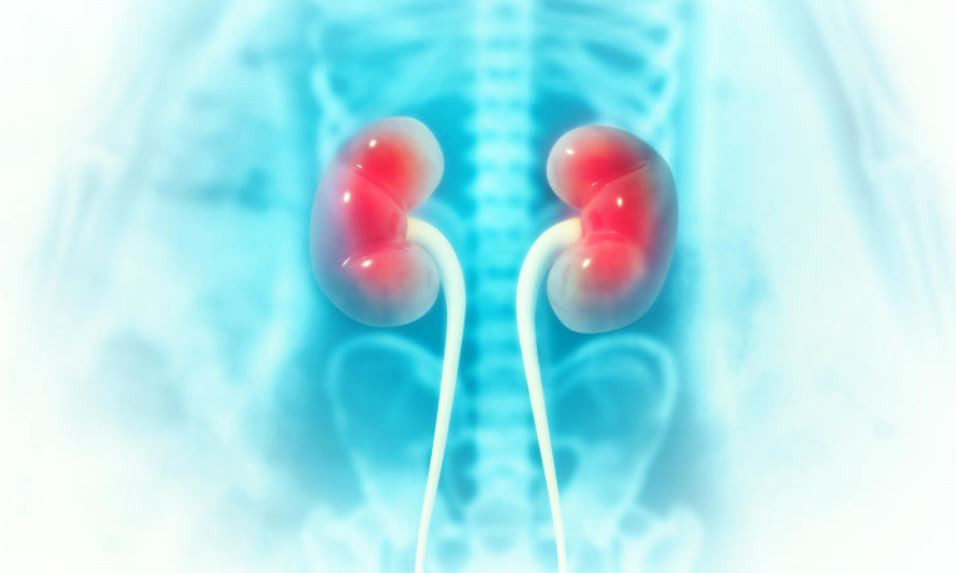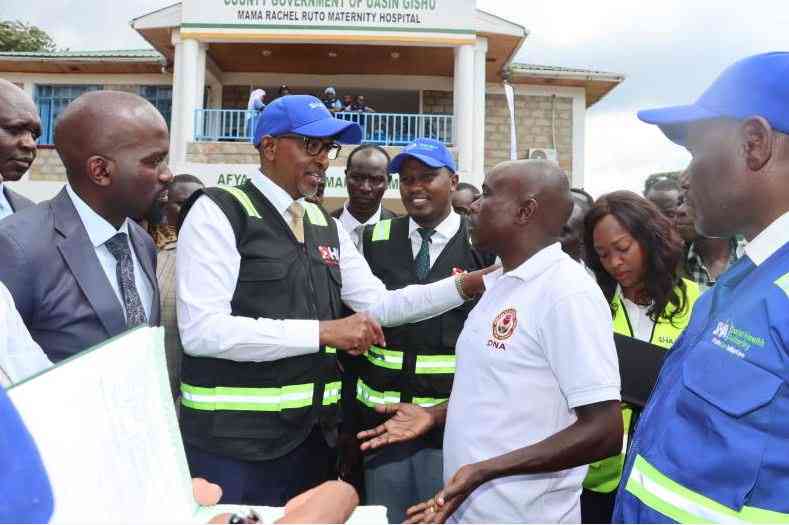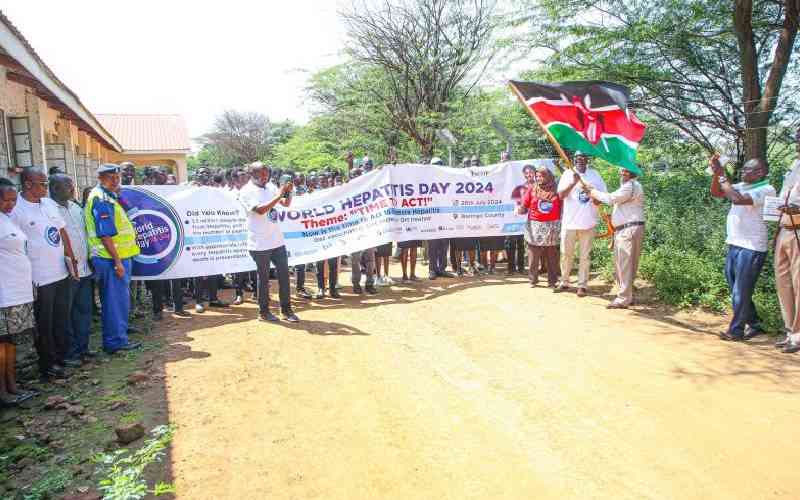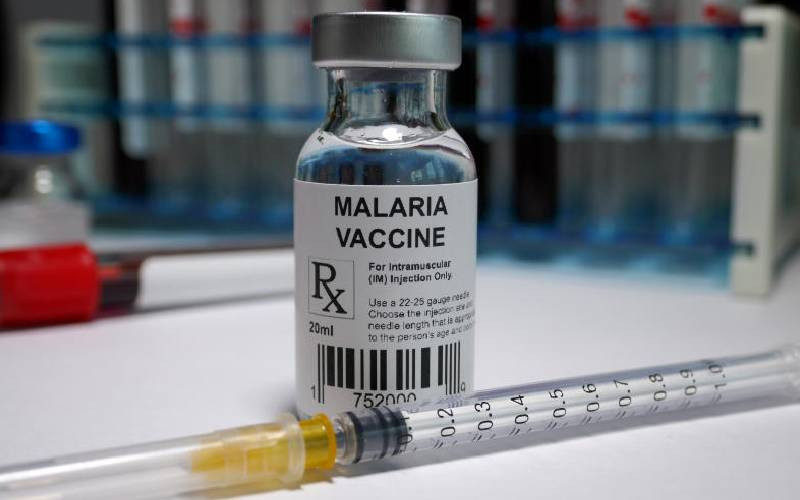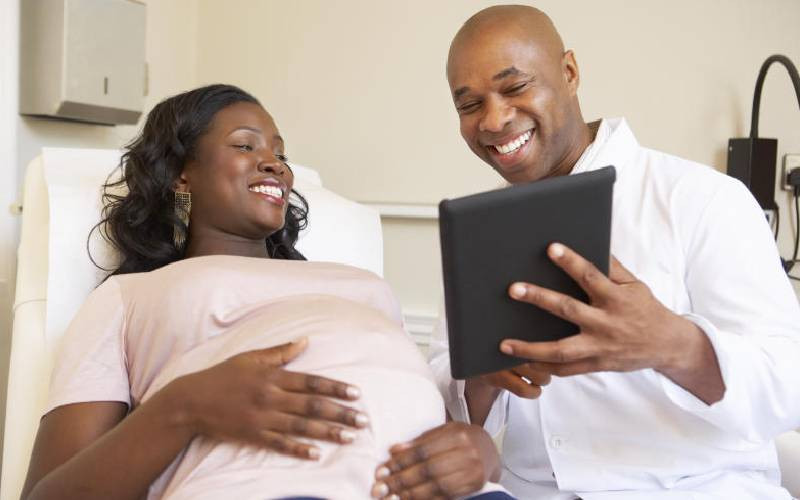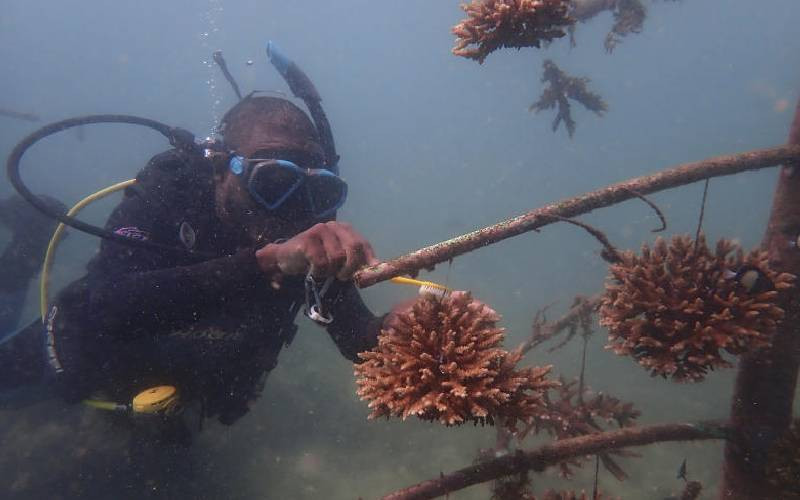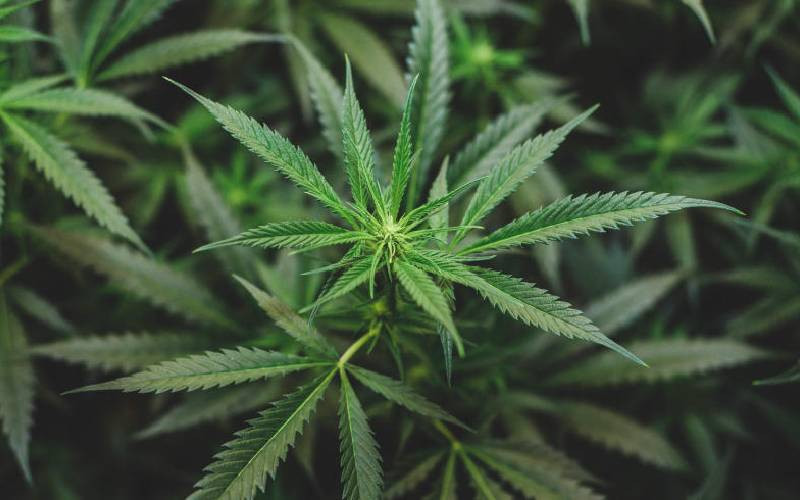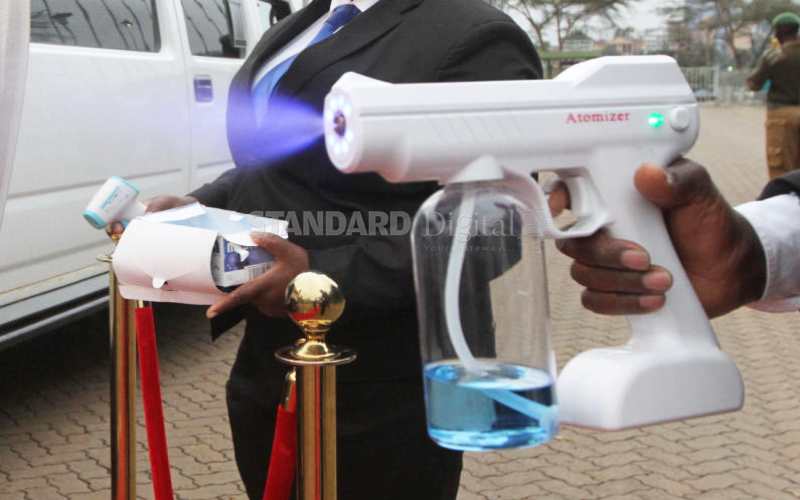
Atomizer hand sanitizer spray to help fight coronavirus. [Elvis Ogina,Standard]
About 200 days after the first case of Covid-19 was reported in the country on March 13, so far there are 38,115 cases, 691 deaths, and 24,621 recoveries.
For a disease that was not only new to Kenya, but the rest of the world, African nations –Kenya included – have been commended on how they reacted.
Kenya’s wins have been seen in reduced daily cases reported this month – probably at a more rapid rate than expected – even raising the eyebrows of not only the public but also the World Health Organisation (WHO).
However, yesterday the country recorded the highest number of cases this month after 244 persons tested positive for Covid-19 with two more deaths. The highest number of deaths this month was 13, on September 25.
Overall, 23 is the highest number of fatalities reported in 24 hours on August 1 while the highest cases in a day is 892 recorded on July 27 arguably when the country was at its peak according to a report by the Kenya Medical Research Institute (Kemri).
When the country was hungry for the economy to be reopened on June 6, President Uhuru Kenyatta presented a worst-case scenario of 45,000 deaths with 450,000 cases in October, when the disease would be at its peak.
The other scenario was if the measures were reduced by 40 per cent, resulting in 40,000 deaths and 300,000 infections by November. If the measures would have been relaxed by 20 per cent, then the numbers would be 200,000 cases and 30,000 deaths by December.
So how have things changed?
“All the restriction measures, coupled with containment measures have borne fruit. That is why in the last couple of weeks, you have noticed a reduction in the number of infections,” said Health Cabinet Secretary Mutahi Kagwe when he visited Kiambu County on September 23.
A ban on public gathering on March 14, suspension of flights on March 15, mandatory quarantine on suspected cases on March 22, dusk to dawn curfew on March 27 and cessation of movement into and out of high-risk counties on April 6 are some of the containment measures implemented when the pandemic struck on March 13.
Cessation of movement into and out of Nairobi, Kwale, Mombasa, Kilifi and Mandera counties has since been lifted. However, dusk to dawn curfew was revised from 7pm - 5am to 9pm - 4am.
While in terms of putting in place containment measures Kenya seems to have gotten it right, in other areas of preparation some gaps are still glaring seven months down the line.
For example, despite the 47 counties being allocated Sh5 billion to boost preparedness with 300 isolation beds each, by the last Presidential Address on August 26, only seven had the required bed capacity, according to a report by the Ministry of Health Technical Assistance Team on Covid-19.
They are Nairobi, Mombasa, Machakos, Mandera, Makueni, Garissa, and Kakamega.
Additionally, the government, through the Kenya Medical Supplies Authority (Kemsa), is expected to accept a loss of Sh2.3 billion in a Sh7.1 billion scandal of PPEs due to speculative procurement.
National Assembly Health Committee did confirm that Kemsa acquired PPEs from suppliers using reverse procurement, where the items are brought without prior negotiations, with plans to pay later.
However, Kemsa now has Sh6.2 billion worth of items it cannot dispose of since the market is already flooded with cheaper options. For example, the N95 mask Kemsa procured in May for Sh700 a piece now goes for Sh150.
The scandal of PPEs comes with claims of poor quality of the same from health workers.
While the move to start local production of PPEs in order to cut importation costs is lauded, poor quality of some of the equipment has put healthcare workers at risk of infection.
Additionally, healthcare workers confirmed yesterday, a four-month compensation package from April 1 has not been actualised.
“The Association commends the President and Cabinet for approving the compensation and welfare package for health workers and calls for fast-tracking of its implementation,” said Were Onyino, Kenya Medical Association President.
The Sh3 billion package is supposed to be distributed to all front-line healthcare workers, with the lowest getting Sh5,000 a month and the highest Sh20,000.
Apart from welfare package, healthcare workers have gone on strike during the pandemic, which a report by the ministry acknowledged as a challenge.
“There is a go-slow by healthcare workers in a number of counties due to salary delays, which is affecting response activities,” reads the Kenya Covid-19 situational report dated September 21.
A situational report on the pandemic dated September 20 shows 1,002 healthcare workers have contracted the virus, with 16 dead across 36 counties.
Healthcare workers, under the KMA umbrella, in their statement yesterday while insisting on being provided with the requisite PPEs, cautioned on the plan to relax the mitigation measures.
They said the recent political gatherings being witnessed sent a wrong signal to Kenyans that everything was back to normal.“There is absolutely no benefit risking a preventable spike in number of Covid-19 infections as the altar of politicking. Any spike in Covid-19 cases will affect the healthcare workers disproportionately more than any other group of Kenyans,” reads the statement by the KMA President.
As it stands, public gatherings of any nature have not been authorised yet, but health and security officers have been rather soft on political gatherings. Public gatherings were suspended on March 14 by the Health CS.
During his last address, Uhuru allowed up to 100 people to attend funerals, and weddings as part of the easing of the containment measures. Social distancing and wearing of masks is, however, to be adhered to.
Plans to open schools next month is also the other sign that the country is getting ready to get back to normal activities, which has raised questions if it is another fumble or it will be strategic.
The CS and the President have confirmed that the infection curve of the virus is flattening, signifying that the disease is under control.“It will be a situation of we go down sometimes then we see some spikes. If you remember last week, we were down to about 3 per cent, but there is a day we went up to about 6 per cent,” cautioned the CS on September 20.
It is the reason every piece of data is being interpreted cautiously. “If you look at what is happening in Germany, the UK and other parts of Europe, then we have no choice but to be cautious, for that second wave is a possibility,” added the CS.
Yesterday’s figures of 244 cases from 3,707 samples represent a positivity rate of 6.5 per cent. The WHO stipulates a 5 per cent or lesser positivity rate sustained for two weeks straight as a metric to show that the curve is flattening.
Other parameters are the number of deaths, patients in intensive care unit and the percentage of persons turning positive against the samples tested. “The paramount importance is that we are not noticing excess mortality at the community level (homes),” said Health Director General Patrick Amoth on September 25.
 The Standard Group Plc is a multi-media organization with investments in media
platforms spanning newspaper print
operations, television, radio broadcasting, digital and online services. The
Standard Group is recognized as a
leading multi-media house in Kenya with a key influence in matters of national
and international interest.
The Standard Group Plc is a multi-media organization with investments in media
platforms spanning newspaper print
operations, television, radio broadcasting, digital and online services. The
Standard Group is recognized as a
leading multi-media house in Kenya with a key influence in matters of national
and international interest.

